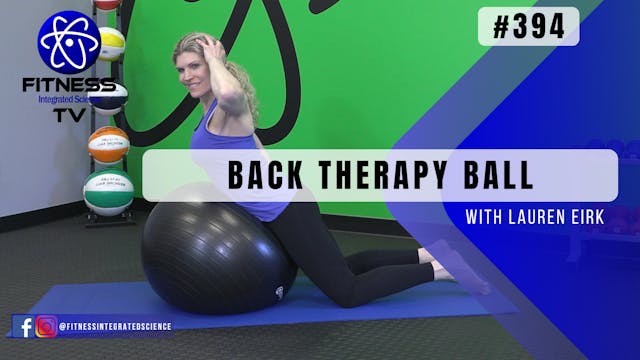Live Event | Pilates Deep Core and Shoulders (60 minutes) with Lauren Eirk
Core Strength
•
1h 10m
This Pilates class will address not only the typical spinal positions that we train for abdominals and spinal erectors, but also for the deep cope muscles. We will address pelvic floor dysfunction, which is the inability to correctly relax and coordinate your pelvic floor muscles. When we strain, it puts pressure on this region. As we age, these muscles can become weak due to childbirth, standing for long periods of time, heavy lifting, straining to defecate, and some sports.
In this video, learn how to subtly engage these muscles on purpose when sitting, laying down, breathing, and exercising. A Pilates ring is used in this video as a resistance tool, but a small ball, pillow, or elastic band can be substituted. The sponge ball will give us a great fulcrum to move around. We will also be targeting the shoulder muscles, as they attach against the rib cage.
Note: Some causes of pelvic floor dysfunction include: Traumatic injuries to the pelvic area (like a car accident), pregnancy, overusing the pelvic muscles that eventually leads to poor muscle coordination, pelvic surgery, being overweight, and aging. Symptoms include: frequently needing to use the bathroom, constipation, straining pain during your bowel movements, leakage, painful urination, and lower back, genital, or rectal pain.
Purchase Products on Amazon:
Yoga Mat: https://amzn.to/2ZDSMrH
Small Pilates Sponge Ball: https://amzn.to/3Sgrr8r
Pilates Ring: https://amzn.to/32neu4Z
Up Next in Core Strength
-
Video 394 | Back Therapy Ball (15 min...
This 15 minute routine will teach you some of the most important exercises to do for the lower back and surrounding joints. The stability ball is often used in rehab and physical therapy because it gets you off the floor and allows you to safely move through a greater resisted range of motion. ...
-
Live Event | SI Stability (60 minutes...
Sacroiliac pain is very common and complex to treat. The key is to keep surrounding muscles around the pelvis, hips and core strong and regularly practice various joint angles in order to maintain range of motion. This routine is designed to strengthen the SI Joint and lumbar spine. The mini ba...
-
Live Event | Back and Shoulders (60 m...
This week features the "anti-sit" methodology. In order to have good posture and place less compressive forces on the spine, it is important to train the upper body positions that are not active during sitting unless we consciously engage them. Experience Yoga, Pilates and therapeutic strength ...




2 Comments